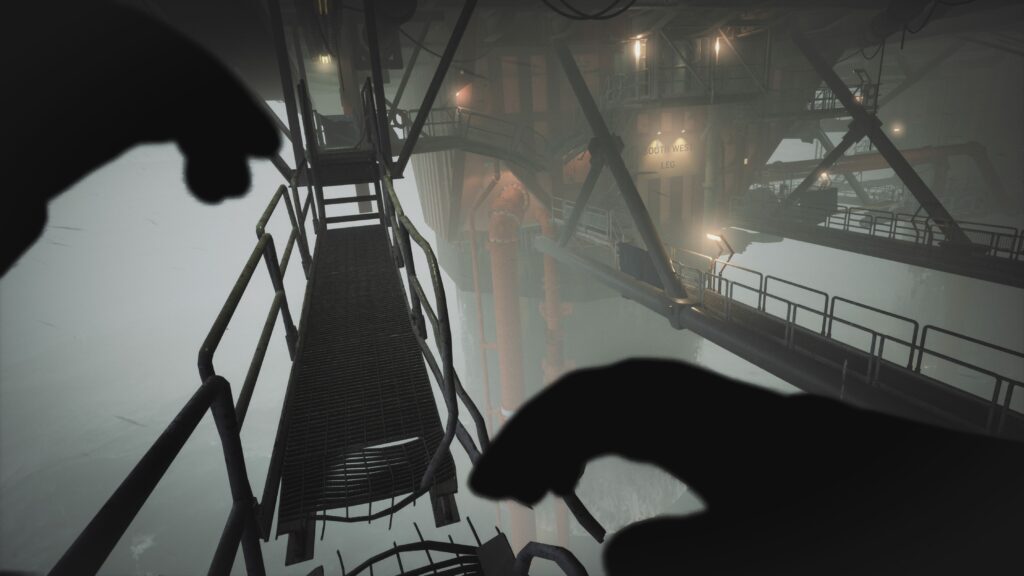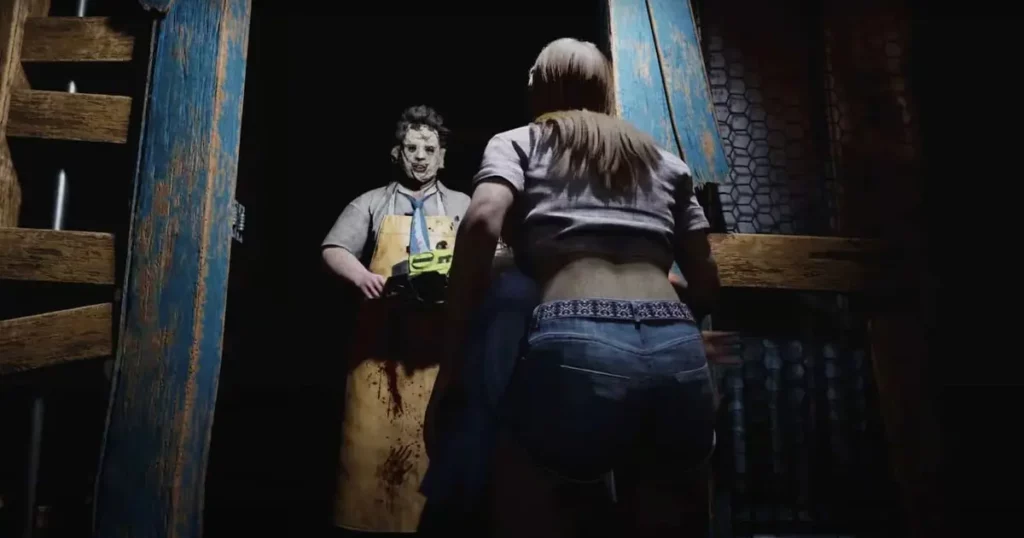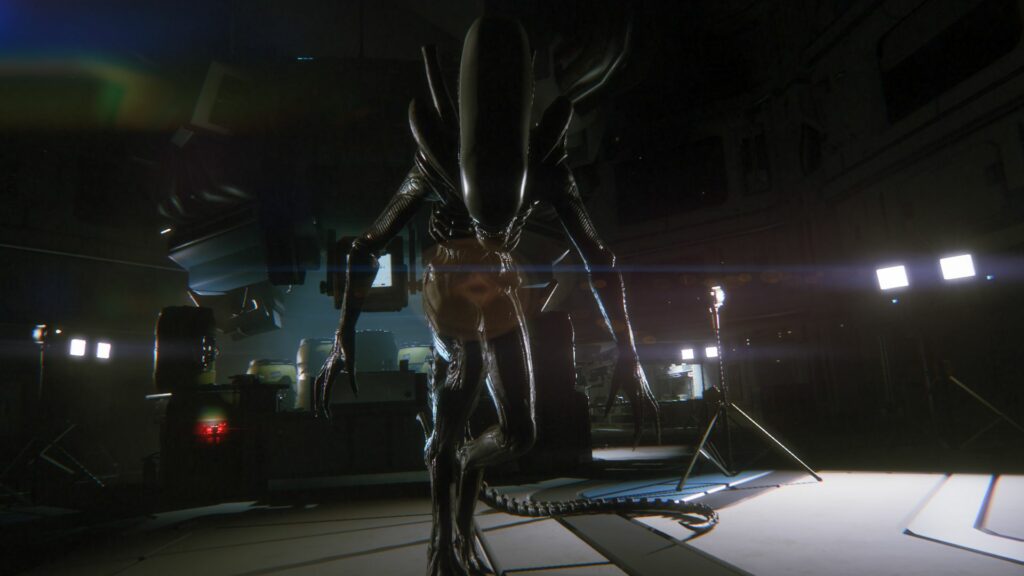 This week marks Halfway to Halloween, and to celebrate, the developers who worked on Still Wakes the Deep and The Texas Chain Saw Massacre reveal the secrets behind what makes their games so terrifying.
This week marks Halfway to Halloween, and to celebrate, the developers who worked on Still Wakes the Deep and The Texas Chain Saw Massacre reveal the secrets behind what makes their games so terrifying.
All horror games are different, whether they are full of jump-scares, based around a strong story to take the player on an emotional journey, contain slow-burn psychological terror that stays with a player long after the credits roll, or are chock full of pin-drop tension to test your nerve.
Two titles sitting at vastly different points on the ‘horror game’ spectrum are last year’s The Texas Chain Saw Massacre, a multiplayer, asymmetrical experience that tested the wits, nerve, and stealth of its players; and the upcoming Still Wakes the Deep, which puts players at the heart of the story as they navigate an oil rig in the middle of the North Sea after disaster strikes.
To celebrate being Halfway to Halloween, Jade Jacson, Senior Game Designer at The Chinese Room who’s currently working on Still Wakes the Deep, along with Steve Kirby (Lead Game Designer) and Kelvin Moore (Project Design Director) from Sumo Nottingham who developed The Texas Chain Saw Massacre, share their eight eerie tips for how to make a great horror game.
Why do we love to be scared?
According to the American Psychology Association, ‘Fear’ is defined as “A basic, intense emotion aroused by the detection of imminent threat, involving an immediate alarm reaction that mobilizes the organism by triggering a set of physiological changes.”
In other words, ‘fear’ is the way we process a threat, how we react to it, and the physiological response we have. When we experience tension or fear, our body produces adrenaline to prepare us for fight or flight. This primal instinct is what gives us the post-scare rush during a jump scare, after an intense scene, or in the aftermath of a shocking sequence: it’s adrenaline converting to dopamine, and our mind and body rejoicing that we managed to escape unscathed. This response is why for some, consuming horror is a fun-filled experience to get the blood pumping, while others only feel dread and terror.
Horror games double down on these feelings by putting the player into the driving seat, where every decision they make has consequences and their actions determine their fate. All those fear and adrenaline responses are heightened to the maximum, and our fear levels can begin to directly impact our performance.
If horror games push our limits and stress us out, why do we keep playing games? The answer is simple: we love novelty. For most of us, horror is fantasy and exists outside our day-to-day lives, so getting close to poltergeists or measuring up to monsters are things we don’t encounter. These new and exciting experiences, combined with the adrenaline rush of survival, keep us coming back for more.
Eight Eerie Tips for Great Horror Games:
From setting the mood to keeping players on their toes to exploring our fears, Kelvin, Jade, and Steve share their eight tips for creating great horror games and how they utilized them in their most recent projects.
1. Atmosphere: On creating The Texas Chain Saw Massacre, Steve said:
If you can create an atmosphere that puts an uneasy feeling in a player, then you’ve got a great starting point. For Texas Chain Saw, everything came to life as soon as we added elements like audio, lighting, and animations into it, and the atmosphere was palpable. If the atmosphere of your game is heavy and hangs over players – the want to survive becomes higher and the stakes are raised.
2. Everyday Heroes: On creating compelling characters, Jade said:
In some horror media: the protagonists can be stereotypes with no personalities. They’re just there to further the plot. In our upcoming title, Still Wakes the Deep, not only does our main character Caz feel real, but hopefully, our entire cast of characters does. These are not caped-crusaders, they are regular people with families, friends, and lives outside of the rig who come into contact with something so unimaginable they can’t comprehend it. It’s this contrast between very ordinary and realistic people and the unfathomable aspect of the unknown that we wanted to explore in our game.
3. Near-miss Moments: On ensuring the tension stays high, Kelvin said:
One of the things that keep players coming back to horror games is the feeling of ‘I was this close’. Suppose a player has been in a close encounter or a near-miss moment. In that case, they know they’re able to escape the enemy or danger, but being put in a stressful situation can cloud your judgment and turn a near-miss into a caught-and-killed situation, like taking too long to maneuver around an obstacle, taking a wrong turn or making too much noise.
4. Pacing: Regarding balancing the gameplay experience in horror games, Steve said:
Some of the most powerful and haunting horror games are the ones that force you to sit in fear. Games like Alien: Isolation wouldn’t be nearly as scary if players were allowed to bolt through every single level at top speed, there has to be a mechanic to slow down the player and give them breathing room in an environment with no air. Similarly, the quiet moments in a horror game can be scarier than the big, bolshy executions: hiding in a shadow in silence while a family member passes you by has all the same breath-holding horror as being chased down the driveway, in my opinion.
5. Fear of the Unknown: Jade said:
In Still Wakes the Deep, we focused on playing with anticipation, surprises, and dread. A lot of it comes from suggestion and a gradual increase in tension. We also worked very closely with the audio team as a big part of what’s scary is what you can’t see but that you can hear. Especially if it’s coming from behind you. Then maybe it will come from the corner of your eyes but you won’t be able to take a good look at it. We wanted to disorient players and make them question what they’re seeing and hearing, maybe lure them into a false sense of security before finally introducing the threat.
6. Consequences: Kelvin said:
Part of what makes horror games so exhilarating is that the player is in the driver’s seat and it’s their actions that determine what happens. Games that have little to no consequence don’t have the scare factor required to keep players on their toes. Some games have huge anticipation but when you meet the enemy/monster/foe, nothing really happens. In Texas, we created consequences for the victims that felt very real and brutal: you don’t just die and respawn, you’re killed and out of the game… destined to watch your teammates make or break the bad decisions that led you to your fate.
7. Gore: The team working on The Texas Chain Saw Massacre wanted it to feel authentic to the movie, and that meant dialing back the gore. Regarding this restriction, Kelvin said:
People think of the original Texas Chain Saw Massacre film as extremely gory, but it’s more of a tense, psychological burn. We were committed to keeping that same feeling in the game and used gore as a storytelling device: on our maps, there’s little to no gore outside, and as the player ventures into the depths of each house or location, they uncover the dark secrets that the family keep as the gore levels increase. It makes it all the more shocking when you do come face to face with it.
8. Phobias: Horror games are excellent at prying into our brains and exploiting our fears. Still Wakes the Deep is set on an offshore drilling platform, offering the development team a plethora of pre-existing fears to exploit, including:
Claustrophobia (fear of small spaces), Submechanaphobia (fear of human-made objects submerged in water), Thanatophobia (fear of death), Autophobia (the fear of isolation), Thalassophobia (fear of large bodies of water), Nyctophobia (fear of the dark) and Acrophobia (fear of heights), and probably lots of others we weren’t even aware of. Players of Still Wakes the Deep will find themselves face-to-face with scenarios that push them to their limits.
 You can watch the full Sumo Group x Game Dev London podcast episode where Sumo Nottingham devs Ross Tregenza and Dexter Prior discuss the scary sound design they created for The Texas Chain Saw Massacre game.
You can watch the full Sumo Group x Game Dev London podcast episode where Sumo Nottingham devs Ross Tregenza and Dexter Prior discuss the scary sound design they created for The Texas Chain Saw Massacre game.
Still Wakes the Deep releases on June 18th for PlayStation 5, Microsoft Windows, and Xbox Series X | S.
The Texas Chain Saw Massacre is available now for PlayStation 5, PlayStation 4, Microsoft Windows, Xbox Series X | S, and Xbox One.







